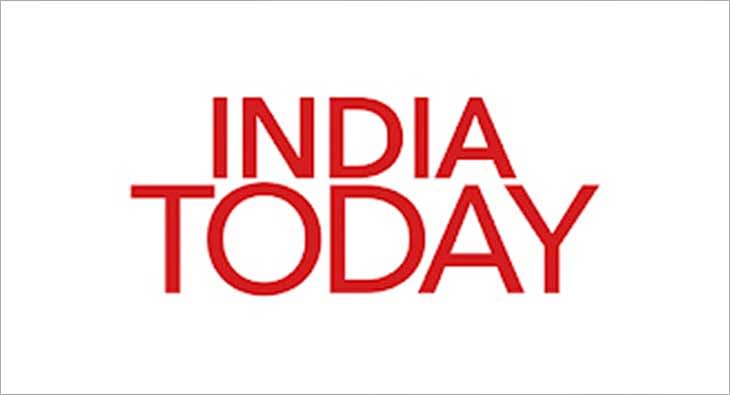Iran's Ayatollah Ali Khamenei was born to a cleric who lived in a house with one room and eight children. A student who joined the protests against the Shah of Iran in 1979, Khamenei rose to become the supreme leader. A rifle in his Friday sermon, signalled that the 85-year-old Khamenei was ready to lead a direct war against Israel.
One evening in 1957, Sayyed Ali, an 18-year-old student, was leaving his educational centre in Qom in Iran. His teacher called him back. "Come here, take my permission before you leave," he said. He then sat on the ground, offering his blessings to the young student. The student would succeed the teacher, and it would not be in school. The student was Ali Khamenei and the teacher, Ruhollah Khomeini.
This was almost two decades before these two men were a part of the Islamic revolution of 1979 in Iran and would lead it.
Ayatollah Ali Khamenei is now the Supreme Leader of Iran and he has succeeded Ruhollah Khomenei. He addressed the "Muslim" world on Friday on the funeral of Hezbollah chief Hasan Nasrallah. He asked them to unite against their enemies.
Under Khamenei, Iran has launched 180 ballistic missiles against Israel which killed Iran-backed terror-group Hezbollah's leader, Hasan Nasrallah. This was Iran's biggest and second direct attack on Israel.
That the cleric-politician was ready at 85 to lead his Shia Muslim nation against the Jewish nation was made clear as Khamenei had a rifle by his side during the Friday sermon on October 4.
A direct attack is a different approach for Iran, which has always used proxies like Hezbollah and Hamas, reported The Conversation. This is because Israel has killed top leaders of Hamas such as Ismail Haniyeh and top Hezbollah leaders like Nasrallah. With top brass leadership of its proxies eliminated, Iran had to give up its cautious approach.
Israel also embarrassed Iran by eliminating Haniyeh in Tehran when he was there as an official guest to attend a state ceremony.
But both Iran's recent attack on Israel and a hitherto cautious approach can be traced to how Ayatollah Khamenei rose to power and steered Iran.
ALI KHAMENEI LIVED IN A ONE-ROOM HOUSE AS A KID
Ali Khamenei was born as Sayyed Ali in 1939, the second out of eight sons of Sayyed Javad Khamenei, an Islamic scholar. His father was an Azerbaijani from Khamaneh, and his mother was an ethnic Persian from Yazd.
Khamenei, who lived most of his childhood in a house with a single room and a gloomy basement, would go on to rule the entire nation.
"When visitors came to see my father as the local cleric to consult about their problems, the family had to move into the basement while the visit went on.... Years later, some charitable people bought the small, empty lot adjacent to our house, so we were able to build two more rooms," reads the Supreme Leader's biography on his website.
More changes were to come in his life as he joined educational institutions.
KHAMENEI WENT TO IRAQ'S NAJAF FOR HIGHER EDUCATION
At the age of four, he and his older brother were sent to traditional schools to start their education and to learn the Quran. After completing his primary schools, he was sent to a theological seminary in Mashhad in Iran.
Even later, he attended religious schools and studied Islamic Jurisprudence under them. For his higher education, he went to Najaf in Iraq.
But he had to return after he heard that his father had lost eyesight in one of his eyes.
He then continued his education in Qom in Iran.
ERA OF EARLY POLITICAL ACTIVISM IN SHAH'S IRAN
In Qom, he met the teacher, Ruhollah Khomeini, who would change his life. Khomeini and the other teachers at Qom would play a substantial role in launching his political career.
"In the areas of political and revolutionary ideas and Islamic jurisprudence, I am certainly a disciple of Imam Khomeini," says Ayatollah Khamenei on his website.
This was the 1950s and the Pahlavi dynasty was in power under Mohammad Reza Pahlavi, the last Shah of Iran. Pahlavis had aligned with the Western Bloc, and they had a close relationship with the US. But their regime was under constant attack from anti-US revolutionaries of Iran.
In 1962, Sayyed Ali would join these revolutionary followers of Iman Khomeini, who opposed the pro-western policies of the Shah regime.
Sayyed Ali and revolutionary activists followed Khomenei's path for the next 16 years.
In May 1963, during Muharram, Ruhollah Khomeini tasked young cleric Sayyed Ali to give a secret message to Ayatollah Milani and other clerics in Mashhad about exposing the Shah's regime.
He was arrested, but he continued the activism for the next decade.
Between 1972 and 1975, Khamenei conducted classes in three mosques in Mashhad, attracting thousands of politically conscious students.
Khamenei's activities ultimately led to his exile for three years in winter 1976. This period ended in late 1978, allowing him to return to Mashhad just before the Islamic Revolution.
Finally, the Shah regime was ousted.
This part of his political activism would also shape Khamenei's regime as he was the result of a movement based on a thorough critique of the West and the US. He was also a part of an anti-Israel clique.
An anti-government movement with members such as Khamenei and Khomeini came to its peak in 1977 and this finally led to the Islamic Revolution in 1979 and the toppling of the Shah's regime.
IRANIAN REVOLUTION AND KHAMENEI COMES TO POWER
Sayyed Ali or Khamenei was a crucial member of the Iranian Revolution, and he was close to Ruhollah Khomeini. Khamenei's political career really began after the former President of Iran, Akbar Hashemi Rafsanjani, brought him into Khomeini's regime.
In 1981, after the assassination of Mohammad Ali Rajai, Khamenei became the President of Iran, bagging 97% of the votes. Khamenei became the first cleric to hold office. He was re-elected in the 1985 Presidential election.
Here, several "American-influenced leftists, deviation and liberalism have been eliminated."
Khamenei was Iran's President during the Iran-Iraq war, which lasted eight years, and was close to the influential Revolutionary Guards. The Revolutionary Guards had been asked to suppress the dissenting voices instigated by him.
In 1989, Ayatollah Khomeini dismissed Ayatollah Montazeri as his political successor, giving the position to Khamenei instead.
THE HISTORY BEHIND IRAN'S PROXY WAR
The Khamenei regime swore to the country's citizens of security and prosperity. But security was more difficult to achieve amid US sanctions. The Shah regime, toppled in the Iranian Revolution, was backed by the US. The new Iranian government has also seen incessant protests due to its repression of people, especially women.
Iran's proxy attacks have a history. This is a nation formed on the basis of "demobilisation", reports The Guardian. The country's theocratic government and military operations came together under "sacred defence" of Iranian territory during the Iran-Iraq war.
After the end of the devastating war, Khamenei had learnt his lesson that his was a rule based on a common consensus with much opposition. He could not afford direct war.
This became more apparent when many leaders refused to accept Khamenei as the Ayatollah.
He knew he could not afford devastation in a regime which had seen repression and orthodoxy. It would be last nail on the regime's coffin.
HOW KHAMENEI STEERED IRAN
He started establishing a regime where he was the "omnipotent overseer".
"Khamenei took many of the powers of the presidency with him and [turned] the office of the supreme leader into the omnipotent overseer of Iran's political scene," according to Vali Nasr of the Johns Hopkins School of Advanced Studies.
He knew he had centralised power and had come to power through a movement which had criticised Shah's reformist policy. Therefore, he focused strictly on the Islamic Republic's ideology.
He even decided to arm Iran against its domestic and foreign enemies.
In the early 2000s, Khamenei strongly supported Iran's nuclear programme, viewing it as essential for national sovereignty and regional power. This stance led to heightened tensions with the U.S. and Western nations, resulting in international sanctions, reported AFP.
Khamenei's regime often resorted to heavy-handed repression, particularly during protests in 2009 after disputed presidential elections. This was also seen during protests in 2017 and 2019 over economic grievances.
But warding off enemies was not enough. He also expanded Iran's sphere of influence in the Middle East.
This has been done through the 'Axis of Resistance' and Iran's support for proxy groups in Iraq, Syria, Lebanon, and Yemen.
This stance has confirmed Iran as a regional power but has also heightened tensions with rivals like Saudi Arabia and Israel. Involvement in Syria’s civil war and support for Hezbollah have been key components of the Supreme Leader's approach to countering U.S. and Israeli influence in the region.
THE THREAT FROM ISRAEL AND THE PROXY WARS
A large part of the political movement Khamenei comes from is anti-US and anti-West. It is also anti-Israel as it considers Israel's occupation of Palestine unfair.
This anti-US and anti-Israel approach is a large part of the state identity of Iran under Khamenei.
Khamenei has been a staunch opponent of the State of Israel and Zionism and has even called the Israeli state a "cancerous tumour of a state" which should be removed from the region, reports CNN.
In 2006, Khamenei gave a speech which included "the myth of the massacre of Jews". But his officials denied it later, reports the BBC.
But Khamenei said in 2014, "the Holocaust is an event whose reality is uncertain and if it has happened, it's uncertain how it has happened".
From discussing wiping off Israel to Holocaust-denying posts, Khamenei has attacked Israel on all fronts in the last few years.
At the 6th Conference in Support of the Palestinian Intifada in the same year, Khamenei hailed Israel's withdrawals from Lebanon in 2000 and Gaza in 2005 as achievements.
'RING OF FIRE; AIMED AT BLEEDING JEWISH STATE
Even now, Khamenei has condemned Israel's attack on Gaza. Iran has strategically fought Israel ever since the October 7 Israel-Hamas war too through Hezbollah.
Hezbollah's daily rocket attacks on northern Israel have led to the evacuation of some 70,000 Israelis from their homes in the north. The Houthis missile attacks have closed Israel's Red Sea Port of Eilat.
Iran's proxy groups like Hezbollah cause a threat to Israel with a "ring of fire" aimed at bleeding the Jewish State's resources and making it fight on several fronts at once, reported The Atlantic Council.
Their attacks on international shipping through the Red Sea have led to a more than half drop in the ship traffic in the Suez Canal. Even the Shia militias of Iraq have attacked Israel with missiles and carried out 170 attacks against US forces in Iraq and Syria.
But after Nasrallah's death, Iran attacked Israel and declared that it would not stay silent on an attack to eliminate its proxies. That it had to come to the forefront is because this was an all-out attempt by Israel to wipe out Iran's proxies. Even while addressing the crowd on Friday on Nasrallah's funeral, Khamenei sent a clear message. "The Muslim world should unite against its enemies," he said. The enemies remain the same, but both Israel's enemies and its strategy for proxy wars have this history behind them. And Khamenei, the 85-year-old cleric, is ready with a rifle.
Published By:
Priyanjali Narayan
Published On:
Oct 5, 2024

 1 month ago
1 month ago

















